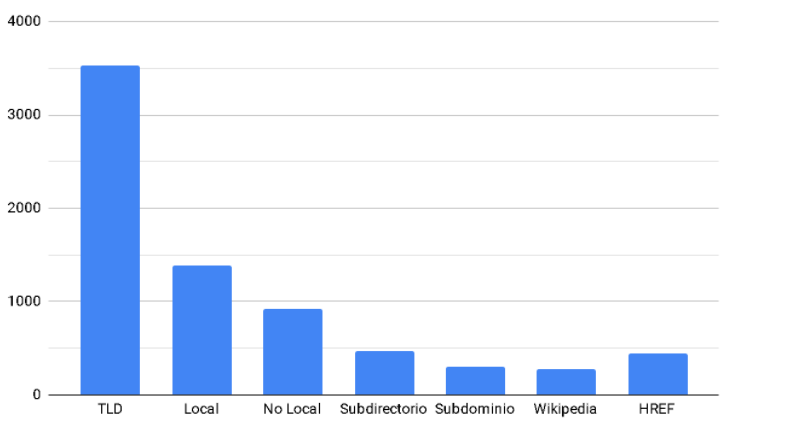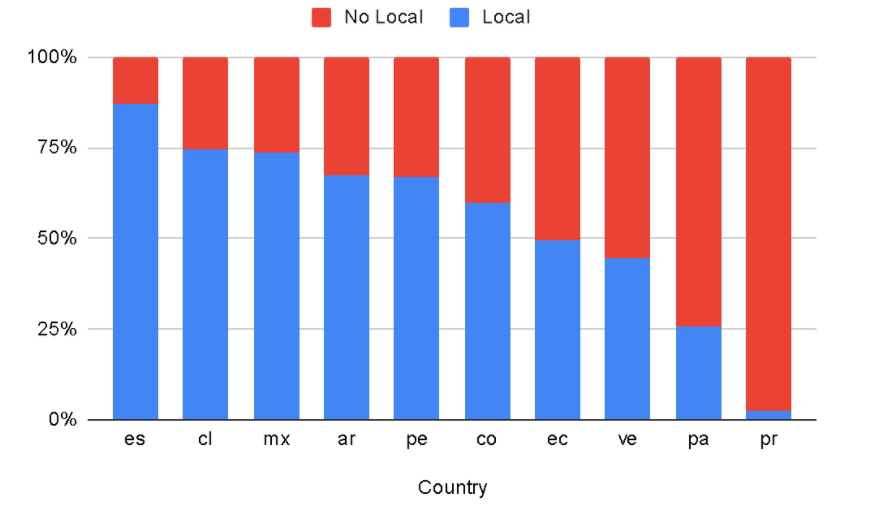Spanish SEO is much more than translation. It requires ensuring your brand is in good position to attract targeted organic traffic. When brands approach us for Spanish SEO services and the need to attract customers across Latin America, they often ask whether a country-specific website will help web pages rank better.
Options include using a subfolder, subdomain, or a country-specific ccTLD (country-code top level domain). Plenty of conversation and recommendations exist for this specific topic. However, we wanted to see if it would be beneficial as far as search engine results pages.
If web structure is more of a peripheral concern, than it helps further define what is most important regarding Spanish SEO.
2014 ccTLD Study
Altura did a ccTLD study back in 2014. We found the following:
- 58.7% of websites in the first position used a TLD structure
- Only 29.9% used a ccTLD
- Only 16.3% of the top-ranking ccTLD pages corresponded with targeted countries
In about 14% of cases (when a ccTLD and targeted country did not align), a web page from Spain was offered in the search engine results.
Taking things further, we wanted to survey local versus non-local search engine results across a number of countries. So, will a ccTLD do well in competing with local results? In Mexico and Spain, the presence of local results comprised 70% of results pages surveyed. But this high percentage differed in other regions, such as Puerto Rico, where the amount of local results in the SERs was below 10%.
This does not reflect a good user experience for locals; a person needing a service or product in Mexico is not served well in being provided with a search result from Spain. Sure, both results may be relayed in Spanish but the distance between the two places makes the shopping experience impractical.
The 2020 ccTLD study
The increased popularity of TLDs inspired Altura to duplicate the study in 2020.
- 48.06% of sites in the first 10 positions use TLDs
- 31.49% use ccTLDs

Local versus Non-Local Rankings

Quality of content is a major factor regarding local versus non-local results. Using a ccTLD does not prevent URLs from appearing in search engine results within other countries.
Observe the distribution of positions 1-10 in the search results.

20% of sites in each position are local, signaling that no site structure has an advantage regarding search engine results pages. And, there are more local results related to transactional intent.
ccTLD Study Summation
After six years, the TLDs in the first position of the Latin American search engine results pages only decreased by 10%. This leaves a lot of opportunity for brands to do a better job in serving the consumers throughout countries of Latin America — especially in regards to localized content.
So, in 2021, what’s most important regarding Spanish SEO? Localized content is huge. Despite a shared language Hispanics across Latin America appreciate content that reads and feels local, especially if it’s from a foreign brand. It shows effort and respect.

Spanish SEO in 2021
More than URL structure, the provision of regional/local content provides brands with the biggest benefits in attracting international markets. It’s not enough to deliver content in Spanish. Content must differentiate between how a consumer speaks and lives the Spanish language.
Consider how a particular Latin American consumer:
-
- searches for products and services
- asks questions using language and terms related to local and regional dialect
There’s opportunity for brands that serve optimized content to Latin American consumers. Effective Spanish content marketing involves targeting markets and properly translating into another language.
And, that involves more than mere translation. It takes a true understanding of the Spanish language and culture in different regions across the world. Read more about the process of transcreation – adapting a message from one language to another, accounting for intent, style, tone, and content.
Further Reading:

